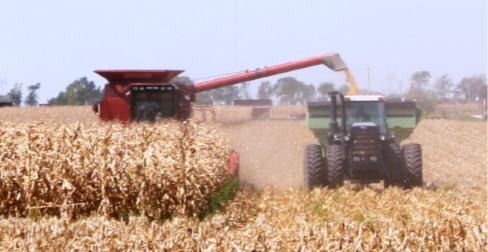- Yield trial results offer an opportunity to compare agricultural products in a geography similar to one’s own farm and can assist growers in selecting quality products for next season.
- As yield results are examined this fall and winter, keep in mind to evaluate multiple locations and scenarios, evaluate head-to-head comparisons, consider the statistical differences, and be aware of any differences that may not be related to the seed products.

To access yield data, begin by looking online by brand or contacting your local seed representative. You may also consider looking at independent and university performance trials to see how certain products performed in a range of different locations and scenarios. These tests are generally conducted by maturity range with seed from a broad array of sources and tested across a variety of growing conditions within a state or region.
Evaluate Multiple Locations
Data from a single plot location near one’s farm is only one snapshot of performance, and may not provide a complete picture of product potential. Products may yield well at one location and poorly at another. Weather, insect pressure, and fertility are just a few variables that can affect product performance across locations. Therefore, evaluating products across multiple locations allows the greatest opportunity to get an accurate picture of performance and consistency. If there is data available, an evaluation of product performance across years is also beneficial.
Evaluate Multiple Scenarios
Field management can also affect product performance. Take a look at the field history. When was the field planted? What was the crop rotation? How much tillage was involved? Was a soil insecticide used? How were weeds controlled? What traits were in the seed and how did they contribute to yield?
Seek Head-to-Head Comparisons
When trying to determine if one product is superior to another, compare the product not just at one plot, but many. You may find that one product consistently outperforms the other.
In large plots with many entries, it may be tempting to compare two products in the same plot. However, if Product A is entry #3 and Product B is entry #15, it may not make sense to compare the two when they are located so far from each other in the plot. If periodic check strips are planted in a field, it is better to compare each product to the nearest check. A check product is to be used as a reference in comparing the yields of products that are in close proximity to it. The purpose of the check is to provide a relative measure of performance in that general area of the field. When the check is yielding well, you would expect neighboring products to also respond closer to the higher end of their yield potential. Conversely, if a check is not performing well, the neighboring products would be demonstrating their yield potential within that non-optimal part of the field. Another good practice is to plant and harvest a second replication of the products you are trying to compare.
Statistical Differences
Statistical differences signify that the results are unlikely to have occurred by chance and have a high probability of repeating themselves. If yields are not determined to be statistically significant, it indicates that the differences due to seed products are not large enough relative to the experimental variation in the field.
University and independent plot results may include an LSD, which stands for the least significant difference. The LSD indicates what amount of yield variation can be attributed to the product itself versus influence from outside factors. Yield differences greater than the LSD can be attributed to actual differences in the genetic yield potential of products. Yield differences less than the LSD are not considered statistically different and are likely due to outside factors. An example is given in Figure 1. Often, you will find the LSD at the bottom of the yield table in performance trial results.

Identify Differences not Related to the Seed
Plot results may include differences in yields that can come from variations across a plot test site. These differences could include drainage, previous crop, fertility, and compaction. Care should be taken to identify how much of the yield variations reported may be attributed to these other field factors not related to the seed choices.
In summary, yield trials can provide important information that can help growers select quality agricultural seed products for the next season. The following are good suggestions:
- Evaluate Multiple Locations to help achieve the most accurate look at product performance and consistency.
- Look at Field History. Management practices such as tillage or weed control may have had an effect on overall performance.
- Seek Head-to-Head Comparisons.
- Compare products at multiple locations.
- If applicable, compare each product to the nearest check product in close proximity to it.
- Consider Statistical Differences and Reliability. Least Significant Difference (LSD) is a value used to determine if plot values are statistically different.
